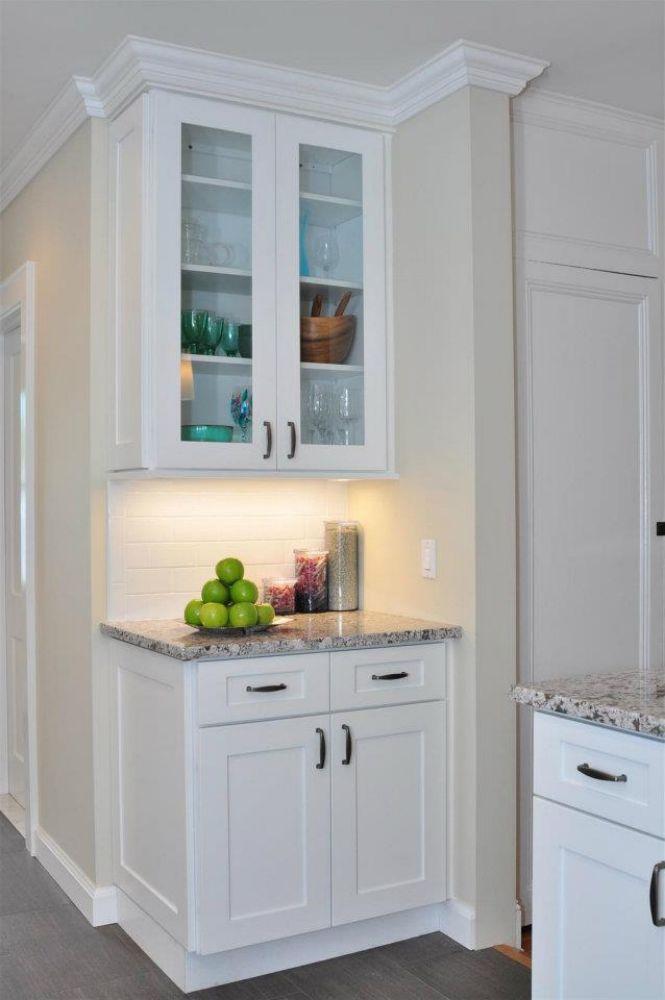Understanding How Off-Gassing Affects Cabinet Selection
When choosing cabinetry for a kitchen, bathroom, or any living space, most homeowners focus on design, color, and functionality. However, one critical factor often goes unnoticed—off-gassing. Off-gassing refers to the release of volatile organic compounds (VOCs) and other chemicals from building materials and finishes into the air. These emissions can impact indoor air quality and, consequently, human health.
Understanding how off-gassing affects cabinet selection is essential for homeowners seeking a safe, healthy, and sustainable living environment. Many modern homeowners are turning to eco-certified options like Greenguard Gold cabinets to reduce exposure to harmful compounds. For more information on healthy cabinet alternatives, you can visit How off-gassing affects cabinet selection, which provides deeper insights into environmentally responsible cabinetry.
The Science Behind Off-Gassing
Off-gassing occurs when volatile organic compounds evaporate from materials into the surrounding air. In cabinetry, these VOCs often originate from adhesives, sealants, finishes, and composite wood products. Common chemical culprits include formaldehyde, benzene, and toluene—substances known to cause irritation and other health risks.
While some level of VOC release is inevitable in most indoor environments, the concentration and duration of off-gassing depend heavily on the materials used. Cabinets constructed with low-quality adhesives or solvent-based finishes tend to emit higher levels of VOCs over extended periods, while low-emission alternatives significantly reduce indoor pollution.
Common Sources of Off-Gassing in Cabinets
The cabinetry manufacturing process involves various components, each of which can contribute to off-gassing. The main sources include:
-
Adhesives and Glues – These are often used to bond wood panels, veneers, and laminates. Traditional glues may contain urea-formaldehyde, a major VOC emitter.
-
Finishes and Paints – Oil-based or solvent-based paints and stains are common VOC contributors.
-
Engineered Wood Products – Particleboard, MDF, and plywood can emit formaldehyde depending on the type of resin used.
-
Sealants and Coatings – These protect cabinet surfaces but may continue releasing VOCs long after installation.
Recognizing these sources helps homeowners understand why choosing the right cabinetry materials and certifications can make a significant difference in indoor air quality.
Health Implications of Cabinet Off-Gassing
Off-gassing can have both short-term and long-term effects on human health. In poorly ventilated spaces, VOCs can accumulate and cause noticeable symptoms such as:
-
Eye, nose, and throat irritation
-
Headaches and dizziness
-
Nausea and fatigue
-
Worsened asthma or allergy symptoms
Long-term exposure to certain VOCs, including formaldehyde, has been linked to more serious health issues such as respiratory illness and even cancer. Children, the elderly, and those with preexisting health conditions are particularly vulnerable to these effects. This underscores the importance of considering off-gassing during cabinet selection, especially for kitchens and bathrooms where humidity can amplify VOC release.
How Off-Gassing Affects Indoor Air Quality
Indoor air quality plays a significant role in determining the comfort and safety of a living space. When cabinets release VOCs, they contribute to poor air circulation and long-term pollution. Since cabinets occupy a large surface area in kitchens and bathrooms, they can become one of the dominant sources of airborne toxins indoors.
The process of off-gassing can continue for months or even years, especially in traditional cabinetry that lacks proper sealing or ventilation. Choosing materials designed to minimize emissions helps maintain fresh, breathable air throughout the home and creates a more balanced indoor environment.
The Connection Between Off-Gassing and Material Choice
Material choice is at the core of reducing off-gassing. Traditional cabinets often rely on engineered wood products bound with urea-formaldehyde adhesives, which are notorious for releasing VOCs. In contrast, environmentally conscious materials—such as solid wood, low-formaldehyde plywood, or bamboo—produce little to no harmful emissions.
Manufacturers that adhere to Greenguard Gold certification standards ensure their products are tested for low chemical emissions. These materials are specifically chosen for their safety, durability, and minimal impact on indoor air quality. Selecting these alternatives ensures both environmental responsibility and long-term household health.
The Role of Finishes and Coatings in VOC Emissions
Cabinet finishes enhance beauty and protect surfaces, but they are also one of the leading sources of off-gassing. Solvent-based varnishes, paints, and stains can release harmful chemicals for extended periods.
Water-based and UV-cured finishes offer safer alternatives, emitting significantly fewer VOCs while maintaining excellent durability. These coatings dry faster and are more resistant to wear, making them ideal for eco-conscious homeowners. When combined with low-emission adhesives and sustainable materials, they form the foundation of truly low-off-gassing cabinetry.
Greenguard Gold Certification and Low-Emission Standards
The Greenguard Gold certification is among the most respected indicators of low-emission products. Cabinets bearing this certification undergo rigorous testing to ensure they meet strict chemical emission limits. Products are evaluated for over 10,000 potential chemicals and VOCs to guarantee they contribute to healthier indoor air.
By choosing Greenguard Gold-certified cabinetry, homeowners can trust that the materials used meet scientific standards for air quality safety. This level of certification is particularly beneficial for schools, healthcare facilities, and residential spaces where clean air is paramount.
The Impact of Off-Gassing on Sensitive Individuals
People with allergies, asthma, or chemical sensitivities are often the first to notice the effects of off-gassing. Traditional cabinets can trigger sneezing, coughing, and even skin irritation for sensitive individuals.
For households with children, elderly residents, or those with respiratory issues, selecting cabinets designed to minimize off-gassing becomes even more critical. Low-VOC or no-VOC materials ensure that everyone can breathe easier without compromising design or durability.
Ventilation and Installation Practices in Off-Gassing Reduction
Proper ventilation during and after cabinet installation plays an essential role in minimizing off-gassing. Even when low-VOC materials are used, allowing fresh air circulation helps dissipate any residual emissions.
Professional installers familiar with green building practices understand the importance of adequate ventilation and can help seal joints properly to prevent trapped air pockets where VOCs might accumulate. Simple measures such as using HEPA-filtered air purifiers or opening windows regularly can further enhance indoor air quality during the post-installation period.
The Influence of Humidity and Temperature on Off-Gassing
Environmental conditions such as temperature and humidity can intensify off-gassing. Warm, humid spaces accelerate the evaporation of volatile compounds, which is why kitchens and bathrooms are particularly susceptible.
To minimize this effect, homeowners should select cabinets built with moisture-resistant materials and finishes that do not react adversely to humidity. Proper climate control through ventilation systems and dehumidifiers can also reduce VOC buildup, keeping the air cleaner and healthier over time.
Comparing Traditional Cabinets to Low-VOC Alternatives
Traditional cabinets and low-VOC alternatives differ not only in their emission levels but also in their long-term health impact and maintenance requirements. Traditional cabinets may be less expensive upfront, but their potential for continuous off-gassing can lead to poor indoor air quality.
Low-VOC and Greenguard Gold-certified cabinets, meanwhile, are manufactured with sustainable materials and safer finishes. These products provide similar aesthetic appeal and functionality without compromising indoor health. The result is a cleaner, safer, and longer-lasting investment for any household.
The Environmental Impact of Off-Gassing
Beyond its effects on human health, off-gassing also contributes to broader environmental pollution. VOCs released into the atmosphere can react with sunlight to form ground-level ozone, a major component of smog.
By selecting low-emission cabinetry, homeowners indirectly help reduce outdoor air pollution as well. Manufacturers that produce Greenguard Gold-certified cabinets typically implement eco-friendly processes that limit waste, conserve energy, and minimize harmful emissions, supporting a healthier planet overall.
Off-Gassing and the Long-Term Cost of Ownership
Although low-VOC and certified cabinets may require a slightly higher initial investment, they offer superior long-term value. Traditional cabinets can lead to hidden costs, such as increased ventilation needs, repainting, or health-related expenses.
Choosing cabinets designed to minimize off-gassing reduces these risks, ensuring longevity and lower maintenance. Their durability and environmental responsibility provide peace of mind, translating to greater savings and comfort over time.
How Manufacturers Are Reducing Off-Gassing
Modern cabinet manufacturers are increasingly adopting green technologies to limit off-gassing. Innovations include:
-
Using water-based adhesives instead of solvent-based ones
-
Implementing UV-curing technology for finishes
-
Adopting formaldehyde-free composite materials
-
Employing closed-loop manufacturing systems to reduce waste
These advancements show how the cabinetry industry continues to evolve, prioritizing sustainability without sacrificing design or quality.
Choosing Cabinets That Minimize Off-Gassing
When selecting cabinets, homeowners should look beyond design trends and consider certifications, materials, and finishes. Important factors include:
-
Certification: Look for Greenguard Gold or CARB Phase 2 compliance.
-
Materials: Choose solid wood or low-emission plywood over particleboard.
-
Finishes: Opt for water-based or UV-cured coatings.
-
Adhesives: Verify that adhesives are formaldehyde-free or soy-based.
Making informed choices ensures a healthier home environment and a sustainable future.
Creating a Healthier Home Environment Through Informed Cabinet Selection
Reducing off-gassing isn’t limited to cabinet choice alone—it’s part of a broader commitment to healthy living. Pairing low-VOC cabinetry with eco-friendly paints, non-toxic flooring, and proper ventilation systems amplifies the benefits of improved air quality.
Homeowners who prioritize these decisions create spaces that are safer, cleaner, and more enjoyable. This proactive approach leads to a lifestyle rooted in wellness and environmental responsibility.
Conclusion
Understanding how off-gassing affects cabinet selection empowers homeowners to make choices that protect both their families and the planet. Traditional cabinets, while often affordable and readily available, can emit VOCs and other harmful chemicals for years. In contrast, low-VOC and Greenguard Gold-certified cabinets prioritize air quality, durability, and sustainability.
By selecting cabinets with minimal off-gassing potential, homeowners can ensure a healthier, more comfortable living space. The impact extends far beyond aesthetics—it’s an investment in long-term well-being, responsible design, and a cleaner, safer environment for future generations.

